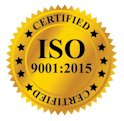Content
I-Dynamic Data Analysis
1)Introduction
2) Techniques Interactions
3) PTA in Saphir
4) P.A in Topaze
II– Pressure Transient Analysis (PTA)
1) Typical Well Test Set-Up
2) Input for PTA
3) 1970’s-Type Curve matching
4) 1980’s-Bourdet derivative
5) 1990’s - Advanced Analytical Models
6) 1990-2000’s –PC based PTA
7) 2005-2006’s - Deconvolution
III– DDA Introduction:Production Analysis (PA)
1) 1920’s-Arnold & Culter
2) 1940’s-Arps
3) 1970’s-Fetkovish Type-Curve
4) 1980’s-Blasingame plot
5) 1980’s –Loglog plot
6) 2000’s –PC based PA
IV– Basic Theory:Diffusion Equation
1) Components
a) Darcy’s Law
b) Conservation of Mass
c) Equation of State
2) Initial & Boundary Conditions—Well Conditions
3) Line Source Solution
a) Assumptions
b) Solutions
c) Finite radius Well (Infinite Acting Radial Flow:IARF)
4) Wellbore Storage & Skin
a) Wellbore Storage or After Flow
b) Wellbore Storage Coefficient
c) Skin:Possible Causes
d) Skin Effect: Equivalent Composite
e) Skin Effect:equivalent radius
f) Wellbore Storage & Skin
5) Outer boundary Conditions
a) 3 mathematical Models
b) Models vs Reality
c) Outer boundaries:PSS
d) Circular boundary
6) Principle of Superposition in time
a) Build-Up
b) Multi-Rate
7) Other means to model a diffusion problem
a) Superposition in Space (image Wells)
b) Numerical Models
8)Physical Meaning of Diffusion
a) Definitions & Objectives
b) References Case
9) Influence of ‘Unknown’ Parameters (Loglog plot +Semi log & history plot)
a) Wellbore Storage
b) Skin
c) Permeability
d) Reservoir Size
e) Wellbore Radius
f) Porosity
g) Total Compressibility
h) Viscosity
i) Thickness
j) Rate Qb
10) Conclusion: Diffusion
a) From Design
b) From Equation (IARF + PSS)
c) Diffusion: Effect of Errors
11) Theory for Dry Gas
a) PVT of Real Dry Gas-Z factor
b) PVT of Real Dry Gas-Viscosity
c) PVT of Real Dry Gas-Volume Factor
d) PVT of Real Dry Gas-Compressibility
12) Real Dry Gas Diffusion
a) Gas Diffusion
b) Oil & Gas Diffusivity (pressure)
c) Gas Diffusivity (pseudo pressures)
d) Pseudo pressure behavior
13) Non-Darcy Flow
14)Two ways to model non-Darcy Flow
V– Reservoir Models
1) Homogeneous Reservoir
2) Double Porosity Reservoir
3) Extensions of double Porosity
4) Double Permeability Reservoirs
5) Extensions of Double Permeability
6) Multilayered Reservoirs
7) Composite Reservoir
8) Extensions of Composite Reservoir
9) Reservoir Anisotropies
10) Analytical Combinations of Reservoir Models

